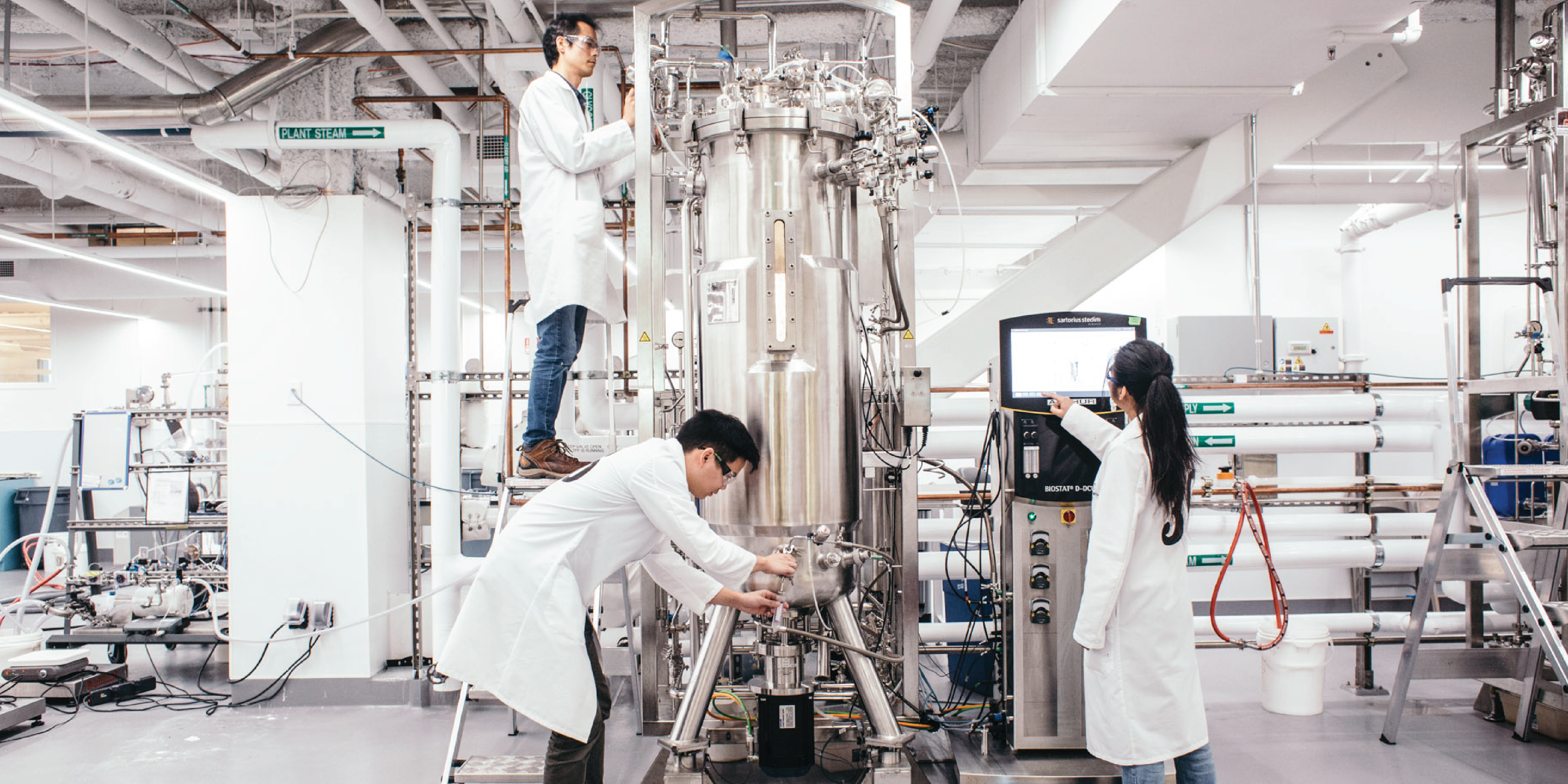Dan Widmaier, CEO and co-founder of Bolt Threads, started experimenting with synthetic biology nearly 15 years ago. Since, his company has partnered with Patagonia and Stella McCartney. From Mission’s second Issue.
How we understand living systems, cells, and chemical processes has changed dramatically in the last 15 to 20 years, and that is best evidenced by the field of synthetic biology. Also known as engineered biology, it has tools that are much closer to engineering tools, and Widmaier became fascinated by its ability to change the world around us for millennia to come.
Microsilk came about from the idea that the best kind of silk already existed in nature, but we just couldn’t use it yet. It turns out that all of the silk consumers buy today is from a moth called Bombyx mori, and it’s made using a 5,000-year-old process. The moths lay eggs, the eggs turn into silkworms, and the caterpillars then create a cocoon made of raw silk. The silkworm
cocoons are then steamed or dropped in boiling water to extract the silk. This process has been widely criticized by environmentalists and animal rights activists, but global desire for silk products continues to feed demand for
this fabric.
When looking for a better alternative, Widmaier discovered that “spiders already run a sustainable process… they just don’t make enough of it.” Overall, spider silk has far superior properties, but a single spider only makes a few milligrams of silk fiber, which made it impractical for creating garments. However, Widmaier thinks that this is a clear “example of nature making a super material that’s stronger than steel… The technology challenge is using the tools in front of us.”
Bolt Threads leveraged these new tools to create what is now known as Microsilk. It starts with scientists going into nature, finding spiders, and collecting genomic information. Spiders evolved the ability to create silk about 400 years ago, and each spider stores that information in its DNA. Widmaier says that to create Microsilk, they copy this DNA into a more scalable system. In this case, they “copy it onto yeast in tanks, purify the silk protein, and extrude it.” Humans have been using yeast for thousands of years to make products like beer and bread. Now, Bolt Threads uses it to make silk.
Bolt Threads recently inked partnerships with Patagonia, Stella McCartney, and Best Made. They’re currently formalizing a few more collaborations, as the goal is to “add as many new channels as possible, so that we can get this technology out
in the world,” says Widmaier.
Most recently, Bolt Threads announced a new product designed to provide consumers with a leather alternative called Mylo. The “new leather” is created from mycelium, which is made by growing the root network of mushrooms. Widmaier says that the team is constantly improving its scaling abilities: “While Microsilk took about seven years from start to first product sale,
Mylo will be eight months.” This is indicative of the company’s ability to learn, grow, and scale. At the end of the day, Bolt Threads wants to make a conscious push toward building a platform for sustainable products
and new materials.
“The challenge is that we’re inventing a new technology from the molecular level,” says Widmaier. New technology typically comes with a higher starting price point, but Widmaier believes that “to solve the sustainability problem, it needs to be mass market.” The company initially thinks about replacing things one by one, focusing on “how can we create things that make your life easier, more comfortable, more efficient?” Widmaier is confident that change is going to come in the form of new materials: Bolt Thread’s long-term goal is to “make new materials that are biocompatible” and push forward
sustainable processes, he explains.
Eventually, as the technology evolves it’ll benefit from economies of scale. So there is a future where materials created by companies like Bolt Threads could replace polyester fabrics and plastic items with ones that are much better for our planet. Widmaier believes that now is the time for a new material revolution, and that it needs to be focused on what is sustainable for the long run. Not just decades, but for millennia to come.





